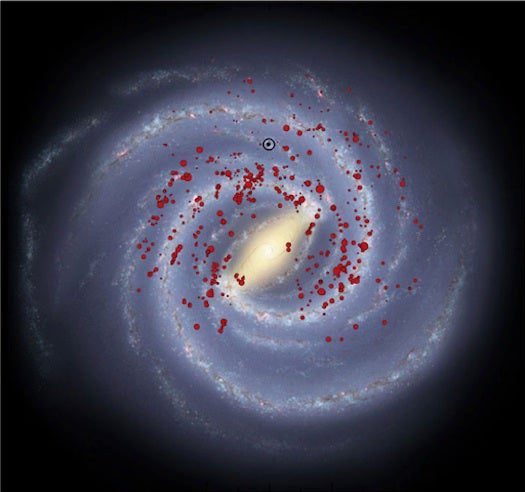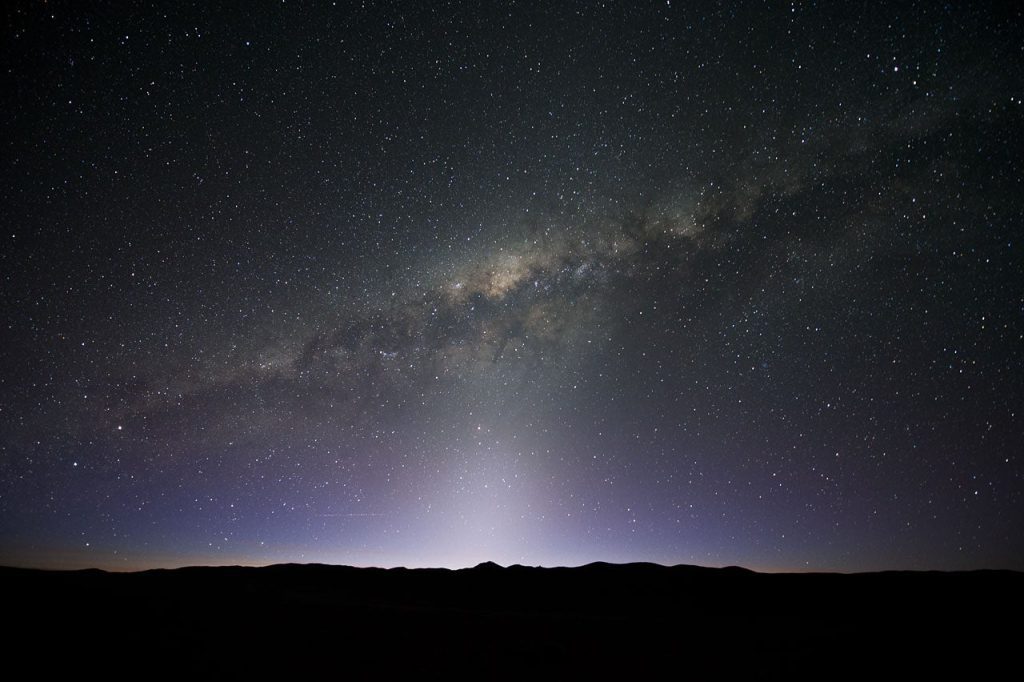A new study provides evidence that our own home galaxy actually has four major spiral “arms,” instead of two. Can I just point out this is 100 percent more arms than our latest understanding of the shape of the Milky Way?
The evidence comes from the Red MSX Source survey, headquartered at the University of Leeds in the U.K., and was published last month in the journal Monthly Notices of the Royal Astronomical Society. Astronomers had previously thought the Milky Way had four arms, but in 2008, data from NASA’s Spitzer Space Telescope pointed to just two major arms.
“It isn’t a case of our results being right and those from Spitzer’s data being wrong. Both surveys were looking for different things,” Melvin Hoare, a University of Leeds physicist who was part of the new study, said in a statement. “Spitzer only sees much cooler, lower mass stars, stars like our Sun, which are much more numerous than the massive stars that we were targeting.”

The Milky Way’s Massive Stars
The Red MSX Source survey systematically searches for young, massive stellar objects. It saw those objects clustering into four major arms. On the other hand, Hoare and his colleagues think that cooler, lower-mass stars predominate in the two Milky Way arms Spitzer confirmed because they’re drawn there, away from the locations where they originally formed, by those arms’ greater gravitational pull.
Young, massive stars are found in all four arms because they have shorter lifespans than cooler stars, and thus end up staying where they’re formed, Hoare said. All four arms are capable of forming massive stars.









